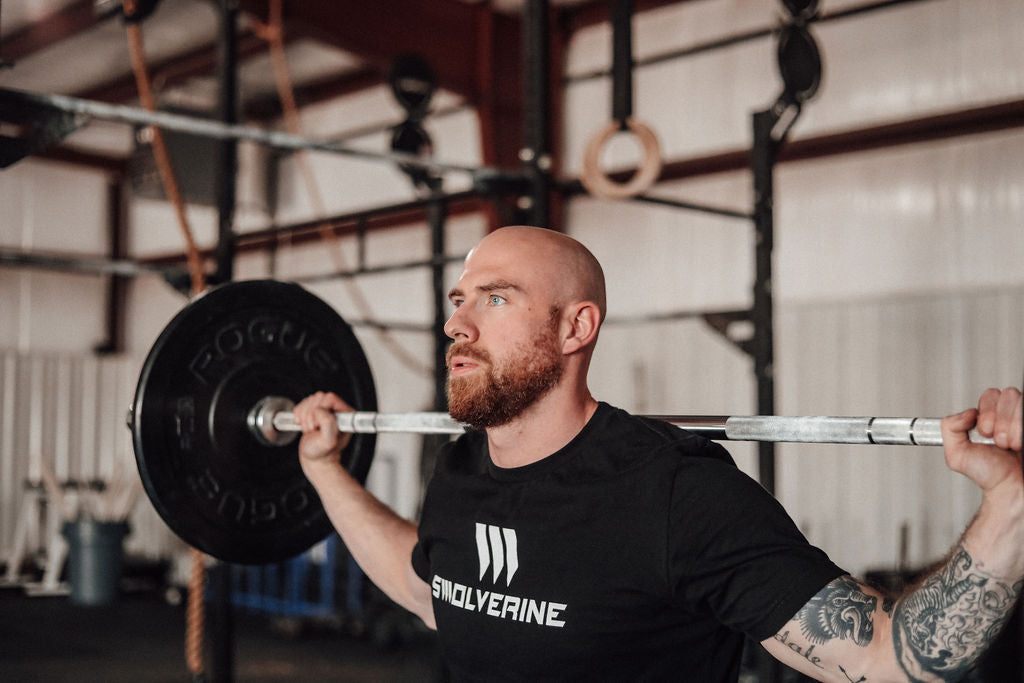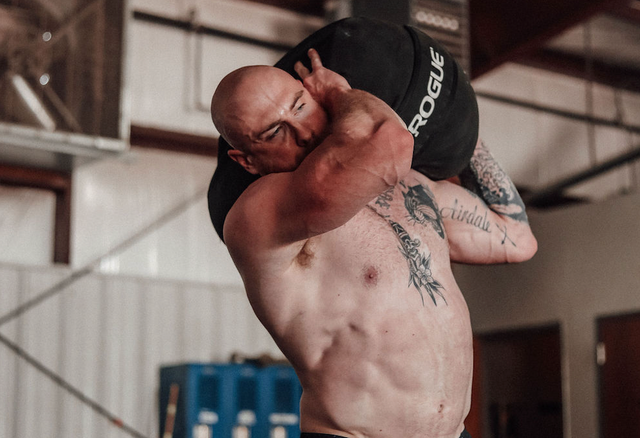As peptides continue to grow in popularity among athletes, bodybuilders, and biohackers, a common question emerges: Are peptides steroids?
The confusion is understandable. Both peptides and anabolic steroids are used to enhance performance, improve recovery, and increase muscle mass — but that’s where the similarities end. In reality, peptides and steroids differ drastically in their structure, mechanisms of action, side effect profiles, and legality.
Understanding this distinction isn’t just about semantics — it’s critical for anyone considering their use. Mistaking one for the other could mean misusing a compound, misunderstanding its purpose, or worse, violating drug policies or laws.
In this guide, we’ll break down:
-
What peptides actually are
-
How they compare to anabolic steroids
-
And why understanding this difference matters for results, safety, and legality
📌 Related reading: BPC-157
📌 Explore: Human Growth Hormone (HGH) Guide
What Are Peptides?
Peptides are short chains of amino acids linked together by peptide bonds. In biological terms, they’re precursors to proteins and serve as messenger molecules that regulate a wide variety of physiological processes in the body.
While some peptides occur naturally (like insulin, oxytocin, or growth hormone-releasing peptides), others are synthetically engineered for therapeutic or performance-enhancing purposes.
How Peptides Work in the Body
Peptides act by binding to specific receptors on cell surfaces, triggering signaling cascades that influence:
-
Hormone release (e.g., growth hormone via GHRH or GHRP)
-
Inflammation and immune modulation
-
Muscle repair and regeneration
-
Skin healing, joint health, and tissue remodeling
-
Metabolism and fat oxidation
Unlike steroids, peptides do not bind to androgen receptors or modify gene expression directly. Their actions are receptor-specific and short-acting, which often makes them more targeted and manageable in terms of side effects.
Popular Peptides in Fitness and Recovery
Some of the most researched peptides in athletic and clinical settings include:
-
BPC-157: Speeds tendon and ligament healing
-
TB-500: Enhances soft tissue repair and blood flow
-
MK-677 (Ibutamoren): Stimulates growth hormone and IGF-1 production
-
GHRH analogs (e.g., CJC-1295) and GHRPs (e.g., Ipamorelin)
“Peptide therapies offer a novel approach to target specific physiological pathways with high specificity and lower systemic toxicity than traditional hormones.”
— Fosgerau & Hoffmann, Drug Discovery Today
What Are Anabolic Steroids?
Anabolic steroids are synthetic derivatives of testosterone, the hormone primarily responsible for promoting muscle growth, strength, libido, and overall male characteristics. These compounds are chemically engineered to enhance muscle-building (anabolic) effects while minimizing the masculinizing (androgenic) side effects of natural testosterone.
Although anabolic steroids have legitimate medical applications—such as treating muscle-wasting conditions, delayed puberty, and hormone deficiencies—they are most widely recognized for their use in bodybuilding and athletic performance enhancement.
How Steroids Work in the Body
Once administered, anabolic steroids bind to androgen receptors within muscle tissue and other cells. This complex then enters the nucleus and alters gene expression, leading to increased:
-
Protein synthesis
-
Nitrogen retention
-
Red blood cell production
-
Muscle hypertrophy and recovery speed
The result is a significant increase in lean muscle mass, enhanced training capacity, and improved resistance to fatigue, especially when combined with proper nutrition and recovery protocols.
Common Anabolic Steroids in Bodybuilding
Several popular compounds dominate performance-enhancing cycles due to their potency and track records:
-
Testosterone Enanthate – A long-acting ester of testosterone used in nearly all foundational steroid stacks
-
Dianabol (Methandrostenolone) – Fast-acting oral compound for bulking
-
Winstrol (Stanozolol) – Often used in cutting cycles for its muscle-hardening effects
-
Anadrol (Oxymetholone) – Extremely potent bulking agent
-
Trenbolone – One of the most powerful injectable steroids, used for both cutting and mass cycles
-
Deca-Durabolin (Nandrolone Decanoate) – Known for joint relief and lean gains
-
Masteron (Drostanolone) – Popular for its muscle-hardening properties during cutting phases
-
Primobolan (Methenolone) – Valued for lean muscle gains with minimal side effects
-
Anavar (Oxandrolone) – Favored for its mild nature and effectiveness in cutting cycles
-
Dihydrotestosterone (DHT) – A potent androgen with significant effects on muscle development and fat loss
Risks and Side Effects of Anabolic Steroids
While anabolic steroids can deliver significant physical transformations, they also carry serious health risks when misused or used without proper post-cycle therapy (PCT), including:
-
Hormonal shutdown and testicular atrophy
-
Gynecomastia (male breast tissue growth due to estrogen conversion)
-
Liver strain and hepatotoxicity, especially with oral steroids
-
Elevated blood pressure and cholesterol imbalances
-
Mood disturbances, aggression, and insomnia
-
Hair loss, acne, and other androgenic side effects
Due to these risks, anabolic steroids are classified as Schedule III controlled substances in the United States and are banned in all major competitive sports.
Key Differences Between Peptides and Steroids
While both peptides and steroids can be used to enhance physical performance, accelerate recovery, and build muscle, they operate through fundamentally different mechanisms. Understanding these distinctions is critical for selecting the right compound based on goals, tolerance, and legality.
Let’s break it down:
| Feature | Peptides | Anabolic Steroids |
|---|---|---|
| Chemical Structure | Short chains of amino acids | Synthetic derivatives of testosterone |
| Mechanism of Action | Stimulate specific receptors (e.g., GH, repair) | Bind to androgen receptors, alter DNA transcription |
| Main Effects | Boost growth hormone, healing, metabolism | Increase muscle protein synthesis, strength, mass |
| Examples | BPC-157, MK-677, TB-500 | Testosterone Enanthate, Dianabol, Trenbolone |
| Duration of Action | Short-acting, often daily or multiple injections/week | Longer half-lives (some orals daily, some injectables weekly) |
| Side Effects | Minimal when used correctly (e.g., fatigue, water retention) | Extensive: hormonal suppression, liver stress, hair loss, gynecomastia |
| Legality | Legal for research and prescribed medical use (gray area for athletic use) | Controlled substances (Schedule III in the U.S.) |
| Use in Sports | Sometimes permitted in non-tested federations | Banned in nearly all professional and amateur sports |
Quick Summary
Peptides act more like signaling agents — they tell your body to do something, such as produce more growth hormone, repair tissue, or improve recovery.
Steroids override your body’s endocrine system to directly build muscle and enhance performance, often at the cost of long-term hormonal disruption.
“Peptides offer a targeted approach with fewer systemic effects, while steroids are powerful but significantly more invasive.”
— Mayo Clinic Proceedings
Why the Confusion Exists Between Peptides and Steroids
Peptides and anabolic steroids are often lumped together in casual conversation—especially in fitness circles—but the confusion stems from several overlapping factors that mask their underlying differences.
1. Both Are Used to Enhance Performance
Many athletes and bodybuilders use peptides and steroids during cycles for similar goals: increased muscle mass, improved recovery, and enhanced fat loss. For example:
-
MK-677, though technically a growth hormone secretagogue, is frequently mistaken for a steroid due to its impact on size and strength.
-
BPC-157 and TB-500 are often stacked with steroids for injury prevention and connective tissue recovery, further blurring the distinction.
2. Both Are Injectable Compounds
While many anabolic steroids are oral or intramuscular injections, most peptides are administered subcutaneously using insulin syringes. This shared delivery method leads people to assume the two are in the same category—when in fact, they act on completely different biological pathways.
3. Lack of Clear Regulation and Misinformation
Peptides often exist in a gray area of legality. Some are approved for clinical use, while others are sold for “research purposes only.” Without clear FDA guidelines or consistent enforcement, confusion grows—especially among newer users who assume all injectables = steroids.
4. Rapid Physical Results Can Be Misleading
Peptides like MK-677 can produce noticeable muscle fullness, deeper sleep, and faster recovery—effects commonly associated with anabolic steroids. But these changes come from growth hormone and IGF-1 modulation, not androgen receptor stimulation or testosterone replacement.
5. Misinformation in Online Communities
Fitness forums, influencer posts, and supplement companies sometimes misuse terminology—referring to anything performance-enhancing as a “steroid.” This oversimplification is dangerous and leads to poor decision-making when it comes to health and legal risk.
“Public perception often fails to distinguish between anabolic steroids and peptide hormones, despite their unique pharmacological actions.”
— Tucker et al., Performance-Enhancing Drugs and the Athlete
Are Peptides Safer Than Steroids?
Generally speaking, yes—peptides are considered safer than anabolic steroids, particularly when used appropriately and under medical supervision. However, “safer” doesn’t mean “risk-free.” The differences in safety largely stem from how each compound interacts with the body’s systems.
Peptides Work With the Body’s Natural Signals
Peptides act more like biological messengers, stimulating processes that already occur naturally—like growth hormone release, collagen production, or cell repair. This makes their effects:
-
More targeted
-
Shorter-acting
-
Less likely to shut down hormonal production
For example, MK-677 (Ibutamoren) increases natural GH and IGF-1 without suppressing testosterone or interfering with estrogen balance.
Anabolic Steroids Override the Endocrine System
In contrast, anabolic steroids override the body’s hormonal regulation by introducing exogenous testosterone derivatives, which leads to:
-
Suppression of the hypothalamic-pituitary-gonadal (HPG) axis
-
Reduced natural testosterone production
-
Potential infertility, gynecomastia, and testicular atrophy
As noted in the Swolverine Winstrol Cycle Guide, even mild steroid cycles require aggressive post-cycle therapy (PCT) to restore hormonal function — a consideration that typically isn’t necessary with peptides.
Side Effect Profiles: Peptides vs Steroids
| Side Effect | Peptides | Anabolic Steroids |
|---|---|---|
| Hormonal suppression | Rare or minimal | Common and significant |
| Liver toxicity | None (most peptides are non-hepatotoxic) | High with oral steroids (e.g., Winstrol, Anadrol) |
| Cardiovascular strain | Minimal | Elevated LDL, reduced HDL |
| Estrogen conversion | Uncommon | Common (especially with compounds like Anadrol) |
| Sleep disruption | Sometimes improved | Often disrupted (see Steroid-Induced Insomnia) |
“Peptides offer tissue-specific modulation with fewer systemic risks compared to the broad androgenic activity of steroids.”
— Paciorek & Neri, Biochemical Pharmacology
Can Peptides Be Stacked with Steroids?
Yes — peptides can be stacked with anabolic steroids, and many advanced users combine both to amplify muscle growth, recovery, and fat loss while attempting to mitigate the side effects of steroid use. When done strategically, this type of stack can offer synergistic benefits that go beyond what either compound could deliver alone.
Why Stack Peptides with Steroids?
Steroids are extremely effective at building mass and strength but come with harsh side effects like hormonal suppression, sleep disruption, and joint dryness. Peptides, on the other hand, can:
-
Support connective tissue and healing (via BPC-157 or TB-500)
-
Improve sleep and GH levels disrupted by steroid cycles (with MK-677)
-
Reduce post-cycle joint pain, inflammation, or fatigue
This makes them useful during cycle, post-cycle, or even during bridge phases where the user is trying to maintain gains while recovering hormone production.
Examples of Common Peptide + Steroid Stacks
-
Trenbolone + MK-677
MK-677 helps support deeper sleep, increase appetite, and mitigate the insomnia often reported on Trenbolone cycles. -
Testosterone Enanthate + BPC-157
Testosterone supports lean mass and strength, while BPC-157 aids in joint and tendon recovery from heavy lifting or old injuries. -
Winstrol + TB-500
Winstrol can dry out joints and connective tissue; TB-500 helps increase tissue resilience and reduce inflammation.
Caution: Know the Goal, Cycle, and Timing
While stacking can be effective, it must be intentional:
-
Use peptides to support weak points, not replace fundamentals like training and nutrition
-
Ensure timing aligns (e.g., avoid stacking high GH peptides during aggressive cutting phases unless GH is the goal)
-
Always prepare a PCT plan if anabolic steroids are included
“Stacking peptides with anabolic steroids has become increasingly popular as a way to mitigate the latter’s adverse effects while maximizing results.”
— Hoffman & Ratamess, NSCA’s Guide to Performance and Pharmacology
Legal Status and Classification: Peptides vs Steroids
Understanding the legal landscape is critical when considering either anabolic steroids or peptides. While both may offer performance-enhancing benefits, their classification, regulation, and availability differ significantly across jurisdictions.
Anabolic Steroids: Schedule III Controlled Substances
In the United States, anabolic steroids — including testosterone, trenbolone, and oxymetholone (Anadrol) — are classified as Schedule III controlled substances under the Anabolic Steroid Control Act. This means:
-
Possession without a prescription is illegal
-
Distribution or sale can result in fines and jail time
-
They are banned by all major athletic organizations, including the NCAA, USADA, WADA, and IFBB
Even therapeutic use (e.g., for TRT) must be supervised by a licensed physician and monitored regularly to remain within legal boundaries.
Peptides: Legal for Research Use (But a Gray Area)
Peptides occupy a regulatory gray area. Many compounds like BPC-157, TB-500, and MK-677 are sold for “research purposes only,” which allows for online distribution. However:
-
These products are not approved by the FDA for general consumer use
-
Athletic use is banned by WADA and other testing bodies
-
Some countries (like Australia and Canada) treat peptides as prescription-only drugs
“The legal use of peptide hormones remains tightly regulated, especially when associated with non-medical performance enhancement.”
— World Anti-Doping Agency (WADA)
Conclusion: Are Peptides Steroids?
No — peptides are not steroids.
While both may play a role in enhancing muscle growth, recovery, or fat loss, they work through fundamentally different mechanisms and carry vastly different risk profiles.
Peptides are short chains of amino acids that act as signaling molecules, stimulating natural processes like growth hormone release, collagen repair, or fat metabolism.
Anabolic steroids, by contrast, are synthetic derivatives of testosterone that bind to androgen receptors and significantly alter hormonal function and gene expression.
When Should You Use Peptides vs Steroids?
-
Choose peptides when you want a gentler approach to healing, recovery, sleep optimization, or gradual physique enhancement. Peptides like BPC-157, TB-500, and MK-677 are commonly used for these purposes.
-
Consider steroids only if you're an advanced user with medical oversight, a PCT plan in place, and clear goals like rapid hypertrophy or competition prep. Steroids such as Testosterone Enanthate, Trenbolone, or Winstrol are more invasive and come with a higher risk profile.
Many Athletes Today Are Using Both
Many advanced users strategically combine steroids for size and strength with peptides to support:
-
Connective tissue
-
Hormonal balance
-
Sleep and recovery
“Understanding the difference between peptides and steroids helps athletes make informed choices about performance, health, and legality.”
— National Institutes of Health (NIH)
Frequently Asked Questions (FAQ)
Are peptides safer than steroids?
Yes — in most cases, peptides carry fewer risks than anabolic steroids.
Peptides do not typically suppress natural testosterone production, do not convert to estrogen, and are not liver toxic like many oral steroids. That said, improper use, poor sourcing, and lack of medical oversight can still lead to complications.
Can peptides build muscle like steroids?
Not to the same degree.
While peptides such as MK-677 can help with lean mass gain and recovery, they do so by elevating growth hormone and IGF-1 levels — a slower and more subtle pathway compared to the direct androgenic action of steroids like Dianabol or Testosterone Enanthate.
Are peptides legal to buy online?
Peptides are often sold legally for “research purposes only.”
However, they are not FDA-approved for casual use or performance enhancement. Using them without a prescription or in a tested sport may still violate anti-doping regulations.
Do I need PCT after using peptides?
In most cases, no.
Peptides typically do not suppress endogenous testosterone, so post-cycle therapy (PCT) is not required. However, if peptides are stacked with anabolic steroids, a proper PCT protocol — using compounds like ZMT (Swolverine’s natural testosterone support) — may be essential.
Can I use peptides during a steroid cycle?
Yes — and many users do.
Peptides such as BPC-157 and TB-500 can support joint health and recovery, while MK-677 helps offset sleep issues and boosts appetite. This makes them popular adjuncts to harsher compounds like Trenbolone or Winstrol.
Are peptides allowed in bodybuilding competitions?
Not in tested federations.
WADA and most athletic organizations ban the use of peptides that alter hormone levels (like GH secretagogues). In untested federations or recreational use, peptides are more common.







